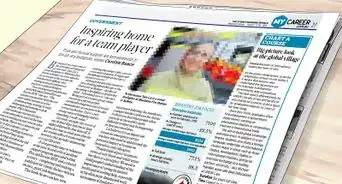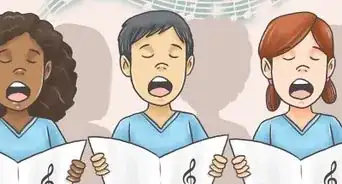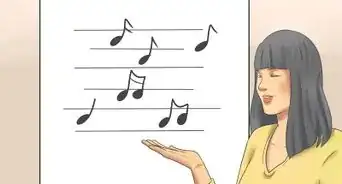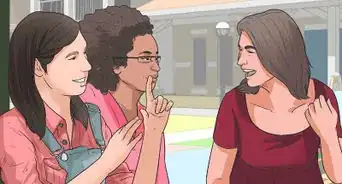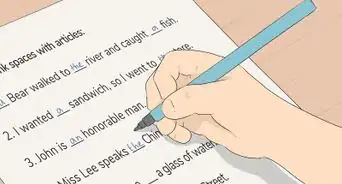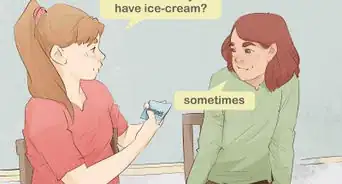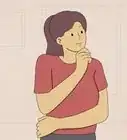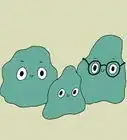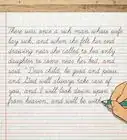This article was co-authored by Courtney Copriviza. Courtney Copriviza is an Elementary School Teacher based in Maui, HI. Courtney specializes in elementary education, classroom management, and social and emotional development. She holds a BA in Communication with a minor in Urban Education and an MA in Teaching from Santa Clara University. Courtney has also taught high school in Madrid, Spain. She is a member of Kappa Delta Pi International Honors Society in Education.
There are 7 references cited in this article, which can be found at the bottom of the page.
This article has been viewed 53,121 times.
Teaching students the parts of speech might seem like a daunting task. But with a little creativity on your part, it can actually be fun for both you and your students. Start by giving your students a clear overview of what nouns are and why they are important. Then, use a variety of activities and games to help your students get a better grasp of the subject. Typically, students learn about nouns early in elementary school. However, you can adjust any of these activities to be helpful for middle-schoolers, too.
Steps
Introducing Students to Nouns
-
1Enunciate the nouns emphatically when greeting students to grab their attention. On the day you’re going to introduce nouns, change your tone as you greet the students. Take care to really emphasize any nouns that you use, perhaps by raising your voice. This will make your students naturally curious.[1]
- Try saying, “Good morning, KEVIN! I really like that SHIRT!”
- You can also do this while taking attendance: “Is JILL here? How is your new PUPPY, JILL?”
-
2Explain what nouns are and how to use them. Once you have their attention, tell your students that they will be learning about nouns today. Let students know that grammar and knowing the parts of speech are important for becoming better speakers and writers. [2]
- Tell them that we use nouns to name people, places, ideas, and things.
- You can give examples like teacher, school, freedom, and pencil.
Advertisement -
3Use objects in the room to help students understand what a noun is. To illustrate your point, ask students to look around the room and name objects. Then explain that all of those objects are nouns. You can say, “Nouns are the words we use for people, places, and things. So when you pointed out your desk, you were using a noun.”[3]
- If your students are already familiar with basic nouns, you can make this more advanced by having them tell the difference between basic and proper nouns.
- Tell them that proper nouns refer to specific people, places, and things. They must be capitalized, while common nouns refer to general people, places, things, and ideas. Ask them to help you turn the sentence, "My sister went to a movie yesterday." into a sentence with proper nouns, i.e., "Mary went to see Abominable on Tuesday."
-
4Play a song about nouns as a fun way to emphasize meaning. Not only is music fun, but it can also help students understand information. This is especially great for students who learn best by listening.[4]
- Use your favorite search engine to look for songs about nouns. You can also check out popular song sites like School House Rock.
- After you listen to the song, ask students what they learned. You can also play it again and let them sing along.
Teaching with Creative Activities
-
1
-
2Hand out note cards with various words on them. Before class, write a bunch of different words on index cards. Some should be nouns and some should be other words. Distribute the note cards to students and ask them to decide where the words belong.[7]
- Say, “Max, what is your word? Is it a noun?” You can then place the notecard (or write the word) in the correct column.
- You can use any words that are appropriate for your students. If they’re still learning to read, basic words like “cat” and “happy” are fine. If you’re working with older students, you can also use this as a way to introduce more sophisticated vocabulary words.
-
3Ask students to explore different types of nouns using a worksheet. Worksheets are a really simple way to help students learn about nouns. You can create a very basic worksheet similar to the chart you created.[8] You can also search online for a template to use. There are lots of free templates available.
- You could create a worksheet that has columns for common nouns, proper nouns, abstract nouns, and collective nouns. Include a word bank with lots of words at the bottom of the page.
- Collective nouns name a group or collection of things, like animals. For example, you could say, "an army of ants" or "flock of birds."
- Abstract nouns describe items that are non-tangible. For example, you could use love, charity, or generosity to help students understand.
- Explain the different types of nouns to students, using examples. Then let them work in pairs to fill out the worksheet.
- If you want to work as a class, you can draw a chart to help students sort nouns into categories.
-
4Help students identify nouns in pictures to help visual learners. Cut out pictures from newspapers and magazines. Alternatively, you can have the students do this in class.[9] Ask each student to identify the nouns in the picture. For example, they could say, “This is a policeman directing cars when the streetlight went out.” Ask them to point out the nouns.[10]
- If you’re working with middle-schoolers, you can make this more advanced by having them write their own story about what’s going on in the picture.
Using Games to Teach Nouns
-
1Play the alphabet game using nouns. In this game, students have to take turns naming a noun according to which letter is next in the alphabet. The next student must repeat all of the words that came before their turn. For example, when it comes to the letter “d”, the student might say, “A is for apple, B is for bread, C is for chewing gum, and D is for donuts.”[11]
- Popular variations of this game include basing the words on a grocery list or a list of things they might take on a trip.
-
2Choose a popular game or movie and have students list the nouns involved. This is called “name the game” and should be lots of fun for students. It allows them to learn about nouns while talking about something they enjoy. Have the students take turns choosing a game or sport to talk about. For example, if a student picks Monopoly, they could list nouns such as:[12]
- Game board
- Dog
- Cards
- Dice
-
3Divide students into teams and have them list nouns. You can make this game exciting by setting a timer and seeing which team can list the most nouns during that time. You can give them a specific category to help them focus. For example, ask them to list all of the nouns that can be found in a school.[13]
- To make this more challenging, you can require students to identify nouns for each category (proper, common, etc.)
- Consider giving a small reward to the winning team. This will make students even more engaged.
Expert Q&A
-
QuestionWhat can I do to encourage more activity in the classroom?
 Courtney CoprivizaCourtney Copriviza is an Elementary School Teacher based in Maui, HI. Courtney specializes in elementary education, classroom management, and social and emotional development. She holds a BA in Communication with a minor in Urban Education and an MA in Teaching from Santa Clara University. Courtney has also taught high school in Madrid, Spain. She is a member of Kappa Delta Pi International Honors Society in Education.
Courtney CoprivizaCourtney Copriviza is an Elementary School Teacher based in Maui, HI. Courtney specializes in elementary education, classroom management, and social and emotional development. She holds a BA in Communication with a minor in Urban Education and an MA in Teaching from Santa Clara University. Courtney has also taught high school in Madrid, Spain. She is a member of Kappa Delta Pi International Honors Society in Education.
Elementary School Teacher You can have various stations for different activities in the classroom. Divide the students into groups and let them work on each station for five minutes and then move to the next. For example, they read in a group, work on worksheets, or play a game on different stations.
You can have various stations for different activities in the classroom. Divide the students into groups and let them work on each station for five minutes and then move to the next. For example, they read in a group, work on worksheets, or play a game on different stations. -
QuestionWhat are the ways in which I can reinforce learning?
 Courtney CoprivizaCourtney Copriviza is an Elementary School Teacher based in Maui, HI. Courtney specializes in elementary education, classroom management, and social and emotional development. She holds a BA in Communication with a minor in Urban Education and an MA in Teaching from Santa Clara University. Courtney has also taught high school in Madrid, Spain. She is a member of Kappa Delta Pi International Honors Society in Education.
Courtney CoprivizaCourtney Copriviza is an Elementary School Teacher based in Maui, HI. Courtney specializes in elementary education, classroom management, and social and emotional development. She holds a BA in Communication with a minor in Urban Education and an MA in Teaching from Santa Clara University. Courtney has also taught high school in Madrid, Spain. She is a member of Kappa Delta Pi International Honors Society in Education.
Elementary School Teacher You can use worksheets and flow charts to reinforce learning. Besides this, you can ask the students to cut and paste answers.
You can use worksheets and flow charts to reinforce learning. Besides this, you can ask the students to cut and paste answers. -
QuestionHow can I avoid making the class monotonous?
 Courtney CoprivizaCourtney Copriviza is an Elementary School Teacher based in Maui, HI. Courtney specializes in elementary education, classroom management, and social and emotional development. She holds a BA in Communication with a minor in Urban Education and an MA in Teaching from Santa Clara University. Courtney has also taught high school in Madrid, Spain. She is a member of Kappa Delta Pi International Honors Society in Education.
Courtney CoprivizaCourtney Copriviza is an Elementary School Teacher based in Maui, HI. Courtney specializes in elementary education, classroom management, and social and emotional development. She holds a BA in Communication with a minor in Urban Education and an MA in Teaching from Santa Clara University. Courtney has also taught high school in Madrid, Spain. She is a member of Kappa Delta Pi International Honors Society in Education.
Elementary School Teacher You can do brain breaks between subjects. For example, when transitioning from reading to math, you can make the students do some dancing, a breathing exercise, a yoga pose, or walk around the field outside.
You can do brain breaks between subjects. For example, when transitioning from reading to math, you can make the students do some dancing, a breathing exercise, a yoga pose, or walk around the field outside.
References
- ↑ https://www.eslconversationquestions.com/nouns-lesson-plan/
- ↑ https://www.education.com/lesson-plan/all-about-nouns/
- ↑ https://www.education.com/lesson-plan/all-about-nouns/
- ↑ https://www.education.com/lesson-plan/all-about-nouns/
- ↑ Courtney Copriviza. Elementary School Teacher. Expert Interview. 18 June 2021.
- ↑ https://elementarynest.com/language-tips-how-to-teach-nouns/
- ↑ https://languageartsclassroom.com/teaching-nouns-noun-lessons/
- ↑ Courtney Copriviza. Elementary School Teacher. Expert Interview. 18 June 2021.
- ↑ Courtney Copriviza. Elementary School Teacher. Expert Interview. 18 June 2021.
- ↑ https://www.turtlediary.com/blogs/creative-ideas-for-teaching-children-nouns-and-proper-nouns.html
- ↑ https://www.turtlediary.com/blogs/creative-ideas-for-teaching-children-nouns-and-proper-nouns.html
- ↑ https://www.turtlediary.com/blogs/creative-ideas-for-teaching-children-nouns-and-proper-nouns.html
- ↑ https://grammar.yourdictionary.com/parts-of-speech/nouns/noun-games.html

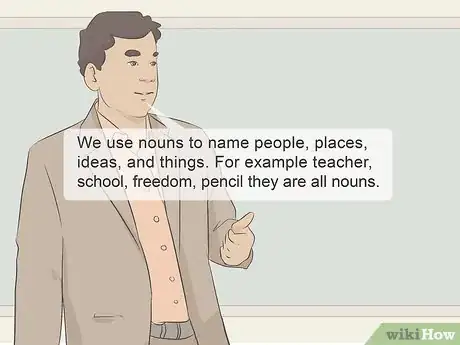

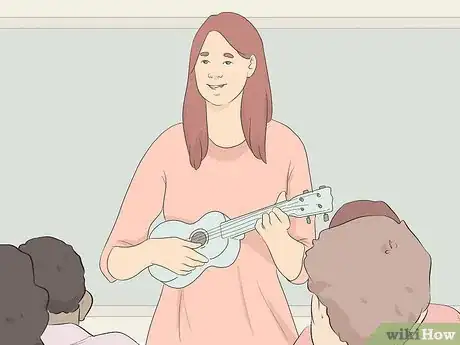
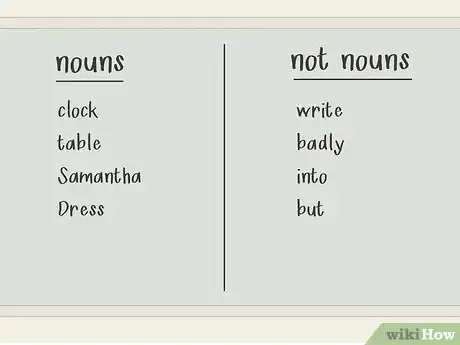

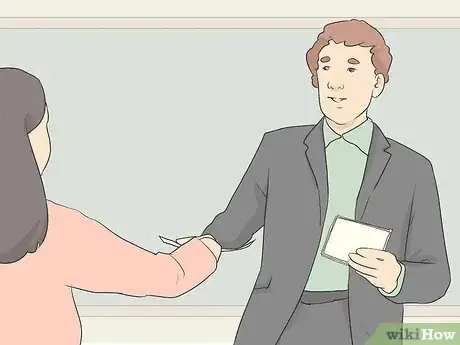
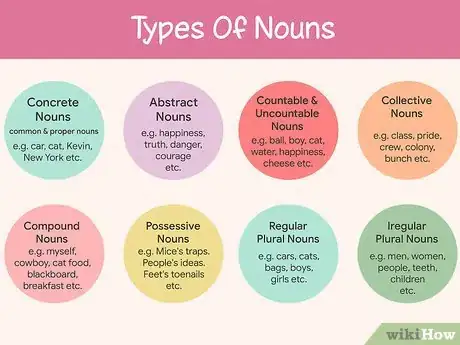
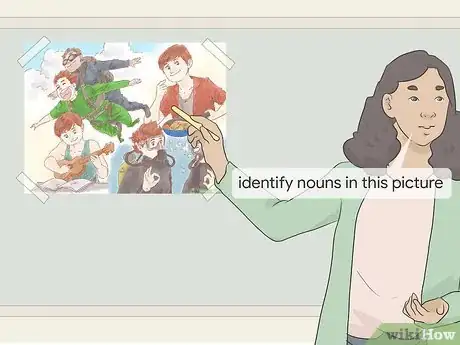



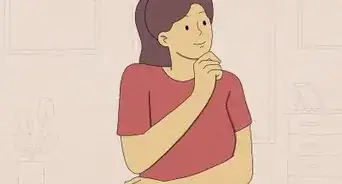


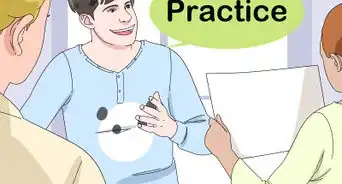
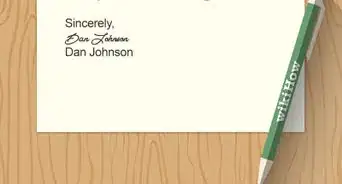
-Step-15.webp)

